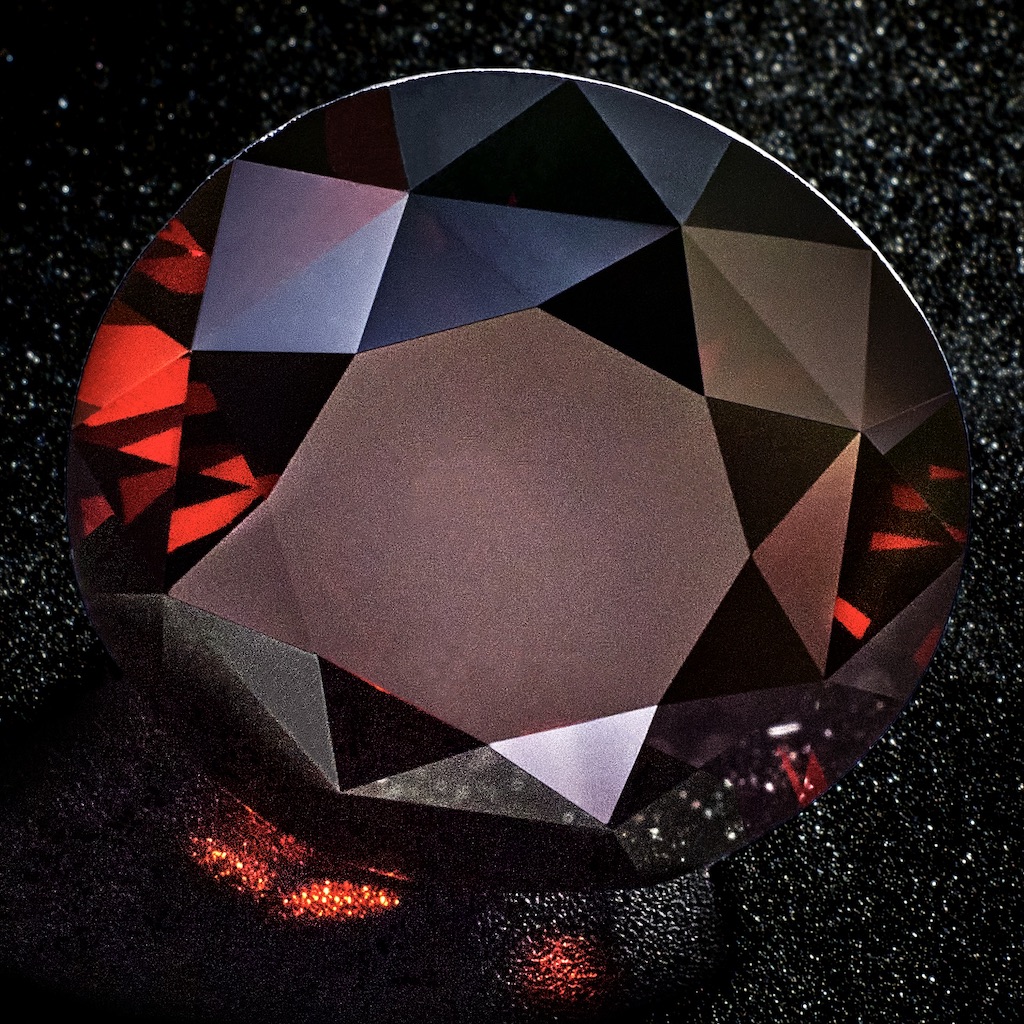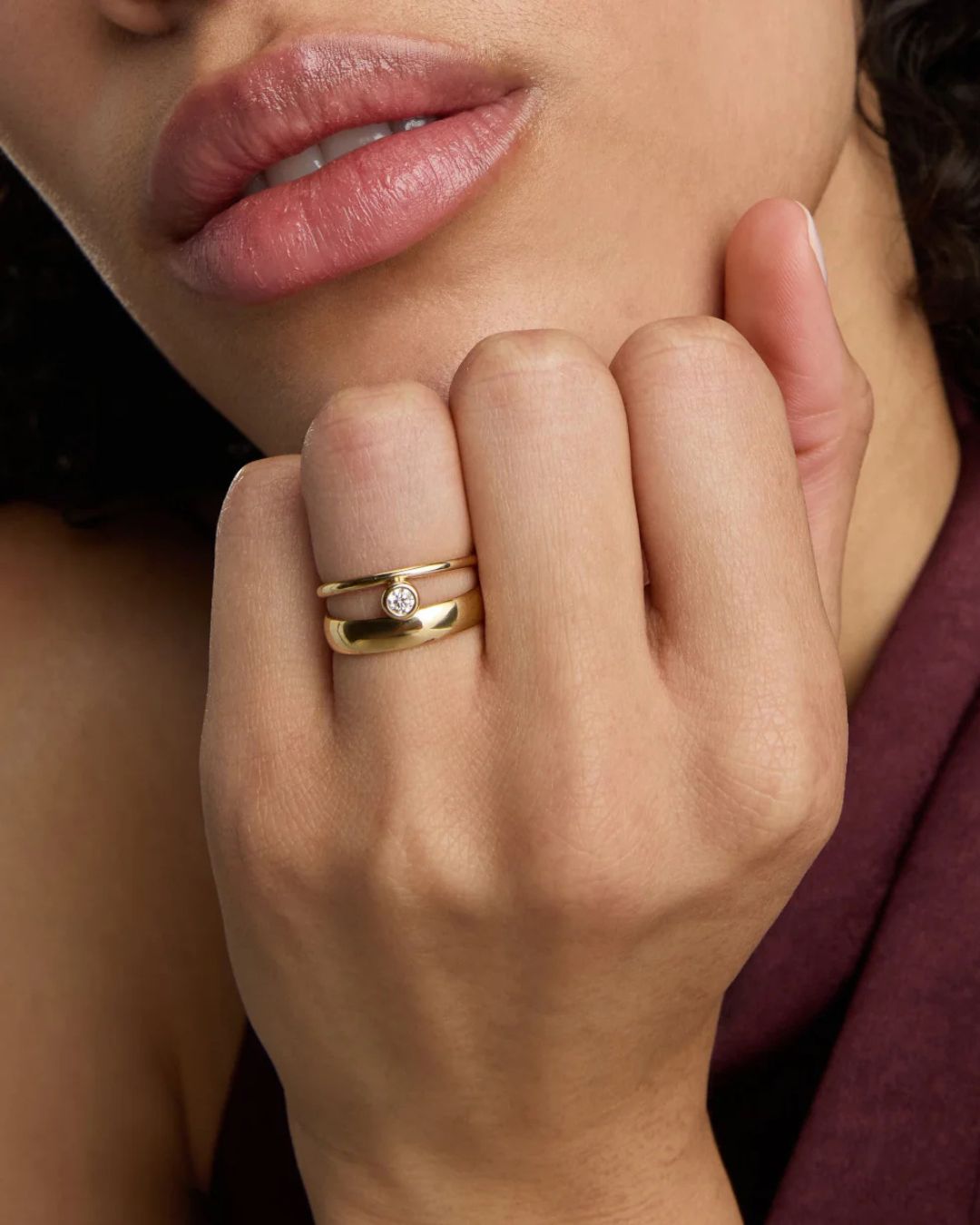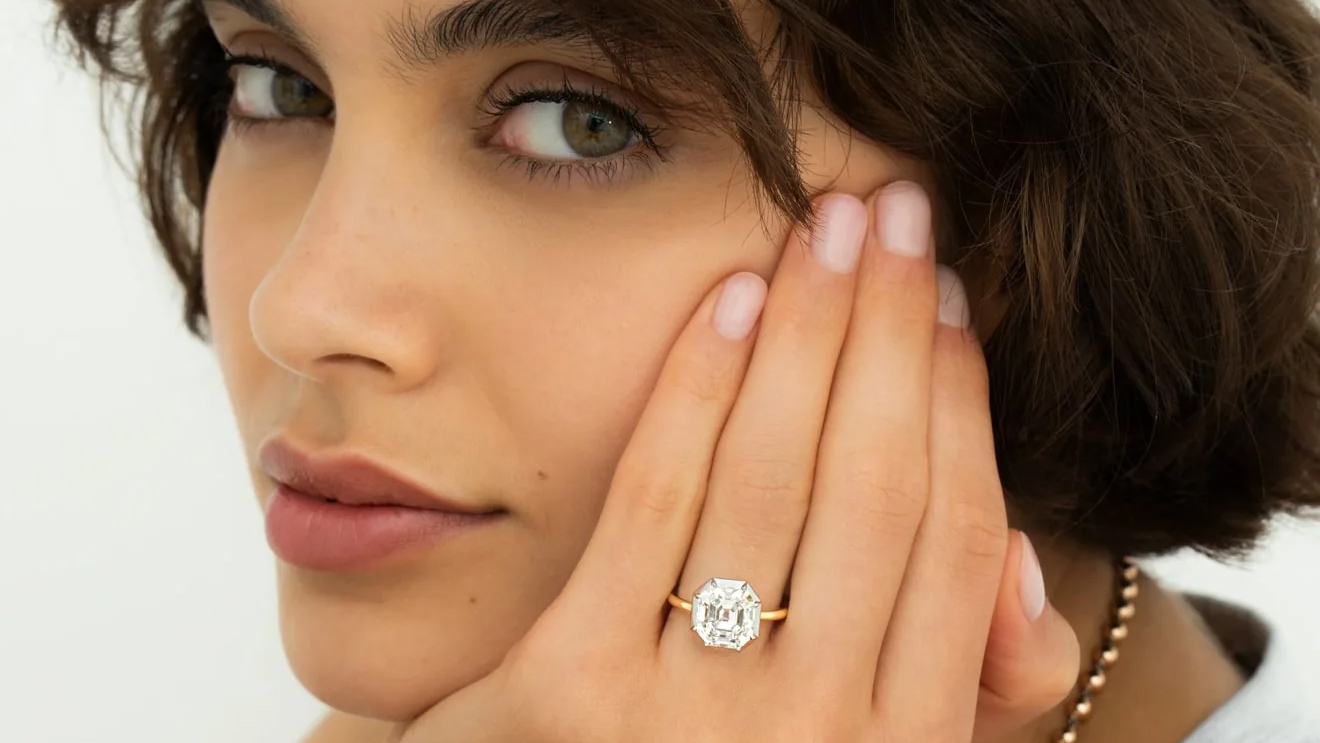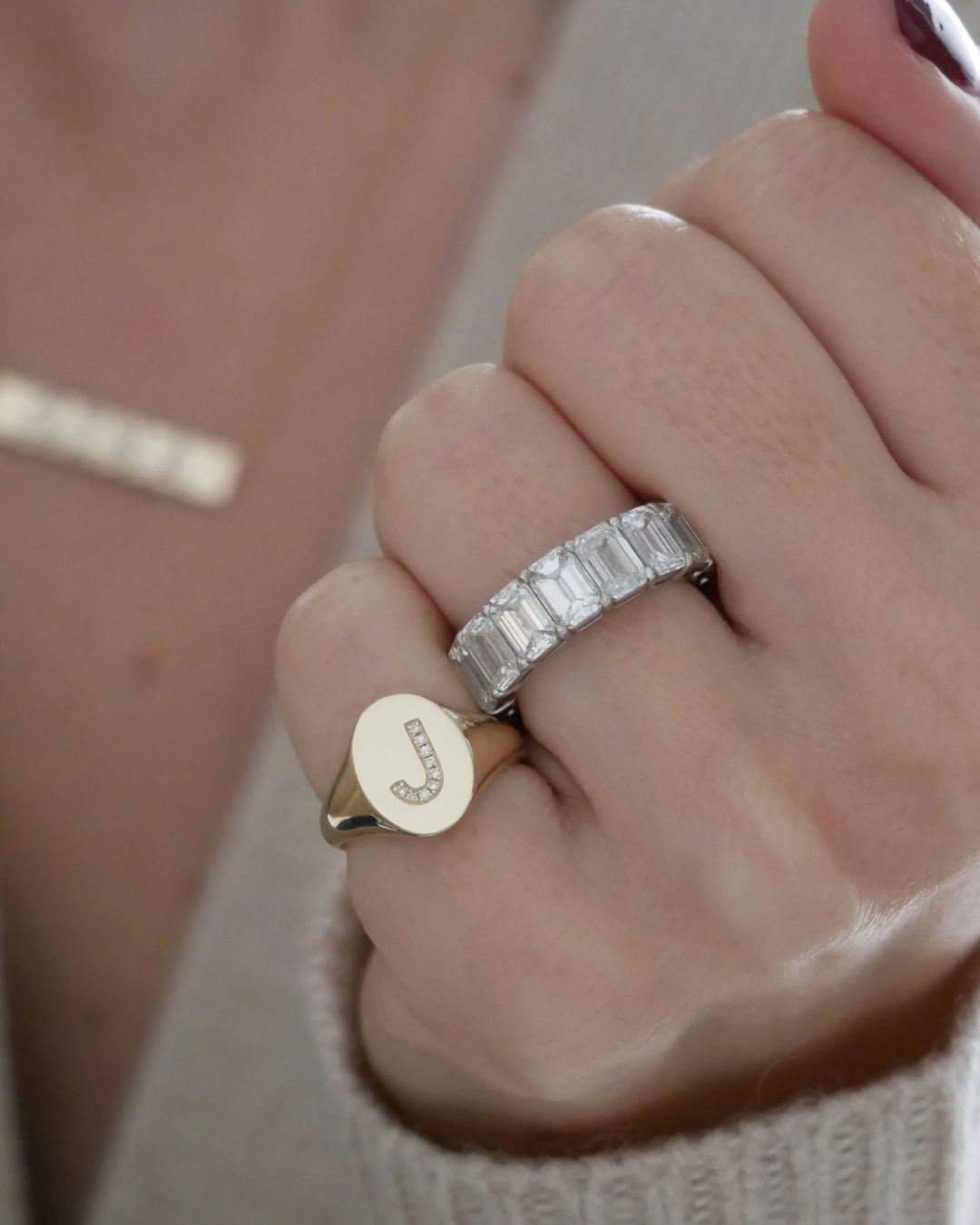Historic Diamonds I June 6, 2025
The 3 Rare Diamonds That Stopped Gem Experts in Their Tracks
The Cullinan Blue, DeYoung Red, and Mouawad VIMP reveal just how far nature and craftsmanship can go.
Photographed by: Jeffrey Westbrook & Sophia Cliffe
Written by: Grant Mobley

Natural diamonds are geological masterpieces, formed over billions of years under crushing pressure and intense heat deep within the Earth’s mantle. Their very existence is an improbable miracle, but when these one-of-a-kind gems are recovered and either preserved in their purest form or elevated through the hands of master jewelers into exceptional pieces of wearable art, they transcend geological rarity. Rare diamonds become history you can hold, a legacy you can wear, and, ultimately, works of art that live on through the generations.
In this second installment of Rare Beyond Compare, we explore three such creations: the Cullinan Blue Diamond Necklace, the VIMP Diamond Ring, and the DeYoung Red Diamond. Each iconic piece holds natural diamonds so rare, so profoundly unique, that we may never see anything like them again. These are not simply beautiful jewels but the result of once-in-an-eternity natural circumstances.
The vivid colors they possess were created by microscopic traces of elements and atomic irregularities that occurred under very specific conditions deep within the Earth. The precise alignment of those factors is so rare that scientists agree we may have already seen the finest examples that nature will ever produce.
Meet the Expert

- Isaac Polnauer is a leading authority on rare natural color diamonds and the Managing Partner of Leibish & Co., globally recognized specialist in the field.
- With years of hands-on experience sourcing, evaluating, and marketing some of the world’s most exceptional fancy color diamonds, Polnauer plays a central role in shaping the company’s global strategy and curating its rarest offerings.
- He holds an MBA from The College of Management Academic Studies.
Why Rare Diamonds Are Living History
When natural diamonds are set into jewelry, they become more than just rare gemstones – they become companions through time. Even in their untouched form, as remarkable loose stones, they carry stories that span billions of years. These diamonds are not static treasures locked away as mere investments; they are living artifacts that gain significance with each generation and become part of personal narratives, public history, and cultural legacies. Each one is an irreplaceable link between the ancient Earth and our modern lives, destined to be admired, studied, and revered for generations to come.
The DeYoung Red Diamond: A Scientific Mystery Among Rare Diamonds

Few rare diamonds ever discovered hold the same mystique as the DeYoung Red Diamond. Weighing 5.03 carats and graded as a Natural Fancy Dark Reddish-Brown by the Gemological Institute of America, this gem is one of the largest known red diamonds in existence and one of the most mysterious. Red is the rarest natural diamond color, and to this day, science still can’t fully explain what causes the beautiful hue. While other fancy colors are attributed to trace elements or specific types of radiation exposure, red diamonds are believed to result from crystal lattice deformation during formation—an unusual geological quirk that warps the structure enough to reflect red light, but only in the rarest of cases.
The DeYoung Red Diamond’s ‘red’ designation and size are just the beginning of what makes it one of the most special rare diamonds. It also behaves highly unusually under different light sources. In standard daylight or fluorescent lighting, the diamond can appear as a deep, orangy brown, with only flashes of red.
Yet, its appearance shifts dramatically depending on the lighting conditions. The diamond gives off a soft yellow fluorescence when placed under ultraviolet light. But what truly captures attention is its reaction to intense lighting, where it emits a vivid, chalky green glow. This rare behavior has long fascinated gemologists and researchers, adding to the DeYoung Red’s appeal not only as a visual marvel but also as a subject of scientific interest.
The diamond’s journey from anonymity to international fame is almost as intriguing as its color. Nothing was known about the diamond until the late 1930s or early 1940s, when Boston jeweler Sydney DeYoung acquired the stone unknowingly, purchasing it in a scarf pin thought to be set with a garnet. It wasn’t until later, when he was cleaning the piece and looking more closely, that he realized the deep reddish-brown stone was, in fact, a diamond. It was a shocking discovery that would have stunned anyone in the gem world.
Rather than sell it, DeYoung kept the diamond quietly tucked away in his personal vault, showing it only to a select few. It stayed hidden for decades until encouraged by a fellow patron of the arts during his winters in Palm Beach, DeYoung chose to bequeath the gem to the Smithsonian Institution. Upon his passing in 1986, the diamond was sent via registered mail by the J. & S.S. DeYoung company, still a prominent fixture in estate jewelry, and officially entered the National Gem Collection in December 1987.
According to Isaac Polnauer, color diamond expert and Managing Partner of Leibish, “natural red diamonds are the rarest of all fancy colors, and the DeYoung’s rise from being unknown into the Smithsonian’s collection has only amplified its legendary status. In today’s market, red diamonds — especially those of significant size and clarity — are considered some of the most exclusive and appreciating assets in the world of collectibles. The DeYoung Red holds not only historic importance but has also played a key role in elevating red diamonds to global recognition, shaping both the perception and value of these exceptional stones for future generations.”
Today, the DeYoung Red is proudly displayed at the Smithsonian National Museum of Natural History, where the public can marvel at a gem so rare that even experts swoon in its presence. Its place in the Smithsonian also offers scientists an invaluable opportunity to study a diamond so unusual that it may hold keys to understanding more about natural diamonds and their origins. Thanks to DeYoung’s foresight, this extraordinary gift from deep within the Earth now belongs to everyone, both as a work of natural art and as a continuing subject of scientific wonder.
The Mouawad VIMP Ring Rewrites the Rules of Rare Diamonds

In the world of rare naturally colored diamonds, few stones rewrite the rules of what’s possible, like the Mouawad VIMP Diamond. Short for Vision Impossible Made Possible, the name speaks not just to the diamond’s astonishing physical characteristics but to the sheer ambition it took to bring it to life. At 67.20 carats, this Fancy Vivid Yellow round brilliant cut diamond is now the largest ever graded by the GIA. But what makes it genuinely extraordinary isn’t just its size, or its rare VVS2 clarity, or even its excellent polish and symmetry—it’s the fact that Mouawad achieved the nearly unthinkable: a round brilliant cut with vivid color saturation, a combination virtually unseen at this scale.
Discovered in 2022 in Kimberley, South Africa, the diamond began as a 141.58-carat octahedral rough crystal. After months of study, Mouawad’s artisans made a bold decision—rather than pursue a fancy shape, as is common with colored diamonds to preserve weight and intensify color, they would attempt a round brilliant cut, a shape prized for brilliance but rarely used in colored diamonds due to its difficulty in retaining strong color saturation. The result? It is a masterpiece of nature and craftsmanship, radiating a vivid yellow that rivals the most incredible yellow diamonds in history.
The diamond’s remarkable yellow color results from nitrogen atoms replacing carbon atoms in its crystal structure during formation, causing the diamond to reflect a bright, golden hue. Fancy-color diamonds represent only 0.4% of all diamonds graded by the GIA over the past two decades. While yellow is the most common of these colors, vivid saturation, especially in large, high-clarity stones, is extremely rare.
Unlike other rare diamonds like the Tiffany Diamond, the Golden Drop, or the Allnatt Diamond—all famous Fancy Yellow diamonds cut in cushion or pear shapes to enhance their color—the VIMP stands alone as the only round brilliant of its kind and scale. And while many diamonds of this caliber are destined for vaults and museum displays, Mouawad set the VIMP into a breathtaking ring, allowing it to be worn and enjoyed, not just admired behind glass. The VIMP is a wearable piece of Earth’s history, a testament to bold vision, and a symbol of unparalleled rarity.
The Cullinan Blue Necklace: A Love Story Told Through Rare Diamonds

Few pieces of jewelry capture the intersection of personal love story, geological rarity, and royal history like the Cullinan Blue Diamond Necklace. Created in 1910 by Sir Thomas Cullinan, founder of South Africa’s legendary Cullinan Diamond Mine, the necklace was a gift for his wife, Annie Cullinan, and a symbolic gesture layered with meaning. Five years earlier, miners at Cullinan’s namesake mine unearthed a 3,106-carat rough diamond, the largest gem-quality diamond ever discovered. Legend has it that Cullinan had promised his wife that he would find and give her the world’s largest diamond. However, when he discovered it, he sold it to the South African government instead.
That monumental stone was presented as a birthday gift to King Edward VII in 1907 and entrusted to famed diamond cutter Joseph Asscher, who divided it into nine principal diamonds. The largest, the 530.2-carat Cullinan I, now resides in the British Royal Scepter, while the 317.4-carat Cullinan II is prominently featured in the Imperial State Crown. Though Annie Cullinan never received the record-breaking diamond, her husband commissioned a magnificent necklace as a tribute, set with nine rare natural blue diamonds believed to represent the nine stones cut from the original Cullinan rough.
Crafted in the Edwardian style, the necklace features a double bow motif encrusted with 243 colorless diamonds and nine natural blue diamonds set in 9-karat rose gold with a silver top. Out of the approximately 30 carats of diamonds, the star of the piece is the 2.6-carat natural blue diamond suspended at its center.
Natural blue diamonds formed under extreme geological conditions, far deeper within the Earth than other diamonds, and owe their color to trace amounts of boron. Cullinan’s mine is known as the Earth’s only significant source of natural blue diamonds. According to Isaac Polnauer, color diamond expert and Managing Partner of Leibish, “Rare blue diamonds of this quality have become some of the most sought-after assets in the world — emotionally, historically, and financially. The Cullinan Blue continues to inspire collectors, connoisseurs, and investors alike, securing its place as a defining chapter in the story of fancy color diamonds.”
Passed down through the Cullinan family for generations, Annie Cullinan’s great-granddaughter eventually sold the necklace to California jeweler Stephen Silver in the early 1990s. Silver donated the necklace to the Smithsonian National Museum of Natural History, recognizing its historical and geological significance. It now resides alongside the famed Hope Diamond in the most visited museum exhibit in the United States. The Cullinan Blue Diamond Necklace is a masterpiece of craftsmanship, a wearable relic of Earth’s most extraordinary forces, and a symbol of love, legacy, and the power of natural, rare diamonds.











